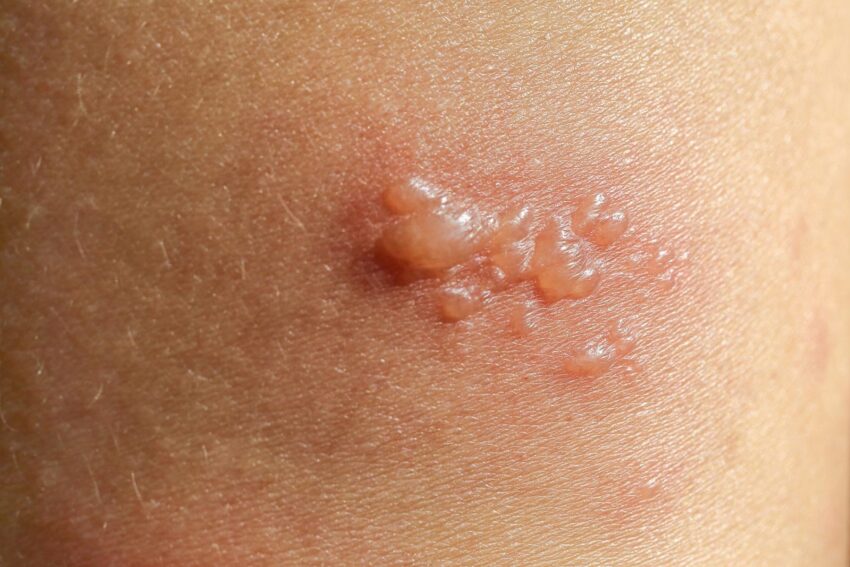What is BP?
Bullous pemphigoid (BP) is a chronic autoimmune skin disease characterized by large, fluid-filled blisters and vesicles that form on normal-looking skin. This condition causes the immune system to mistakenly attack the body’s own tissues. Specifically, in BP, antibodies form against proteins that anchor the epidermis (the outermost layer of skin) to underlying tissues. This leads to blister formation between the epidermis and dermis (the next deeper skin layer).
Symptoms of BP
The main symptoms of are Bullous pemphigoid large, fluid-filled blisters surrounded by erythematous skin. These blisters can range in size from a few millimeters to several centimeters. Common areas affected include the extremities, abdomen, chest, back, neck, and groin area. However, blisters may appear anywhere on the body. Other symptoms may include intense itching, scaling, and pain or soreness at blister sites. Symptoms typically develop gradually over weeks to months.
Causes of Bullous Pemphigoid
The exact cause of BP is unknown; however, researchers believe it is linked to a dysfunction of the immune system. Certain factors may play a role in triggering BP, including:
– Age: BP is more common in elderly adults over 60 years old. It is rare in children.
– Medications: Some drugs have been associated with an increased risk of BP, including diuretics, antibiotics, and oral hypoglycemics.
– Inflammation: Conditions causing localized or systemic inflammation could potentially trigger BP in susceptible individuals.
– Genetics: Having a family history of BP or other autoimmune diseases increases risk. Specific genetic factors are being investigated.
– Stress: Psychological stress has been theorized as a potential contributing factor.
Diagnosis of BP
Due to the characteristic appearance of large, fluid-filled blisters arising on otherwise normal skin, the diagnosis of BP is often suspected based on skin examination alone. However, confirming the diagnosis involves biopsy of perilesional skin. The biopsy is examined under a microscope to detect basement membrane zone separation and the presence of basement membrane zone antibodies on direct immunofluorescence testing. In addition, BP blister fluid or serum can be tested for antibodies against collagen VII.
Treatment of Bullous Pemphigoid
Treatment for BP involves suppression of the immune system to control blistering and alleviate symptoms. The main treatment options include:
– Topical corticosteroids: Potent topical steroids are often first-line treatment for mild disease limited to a few areas.
– Oral corticosteroids: Prednisone or prednisolone are commonly prescribed for moderate to severe BP to achieve disease control. They carry significant side effects with long-term use.
– Immunosuppressants: Azathioprine, methotrexate, mycophenolate mofetil, or dapsone may be added to allow tapering of corticosteroids and maintain remission.
– Immunomodulators: Rituximab (anti-CD20 antibody) is being studied as a corticosteroid-sparing option.
– Wound care: Blisters are left intact or drained and dressed to prevent infection and promote healing. Antihistamines may relieve itching.
Prognosis and Prevention of Bullous Pemphigoid
With appropriate treatment, most BP patients achieve remission, defined as the absence of new blisters for at least 6 months. Ongoing treatment is usually required to prevent recurrence. Complete healing may take months. Rarely, BP can be fatal if extensive blistering causes severe fluid loss, infection, or other complications. Steps to prevent flares include protecting skin from friction/trauma, managing stressors, and avoiding potential triggers like certain medications under a doctor’s guidance. Avoiding sun exposure also reduces risk of exacerbations. Ongoing monitoring by a dermatologist is key to successful BP management.
Summary
In summary, BP is a potentially debilitating autoimmune blistering disease of the skin that primarily affects the elderly. Its symptoms of large, fluid-filled blisters can cause significant pain and discomfort. While the exact cause is unknown, immune dysfunction and genetic factors are implicated. Diagnosis involves skin biopsy and immunological staining techniques. Current therapy focuses on suppressing the immune system with corticosteroids and immunosuppressants to control blister formation and promote healing. With appropriate long-term treatment, complete remission is possible in most patients.
*Note:
1. Source: Coherent Market Insights, Public sources, Desk research
2. We have leveraged AI tools to mine information and compile it

